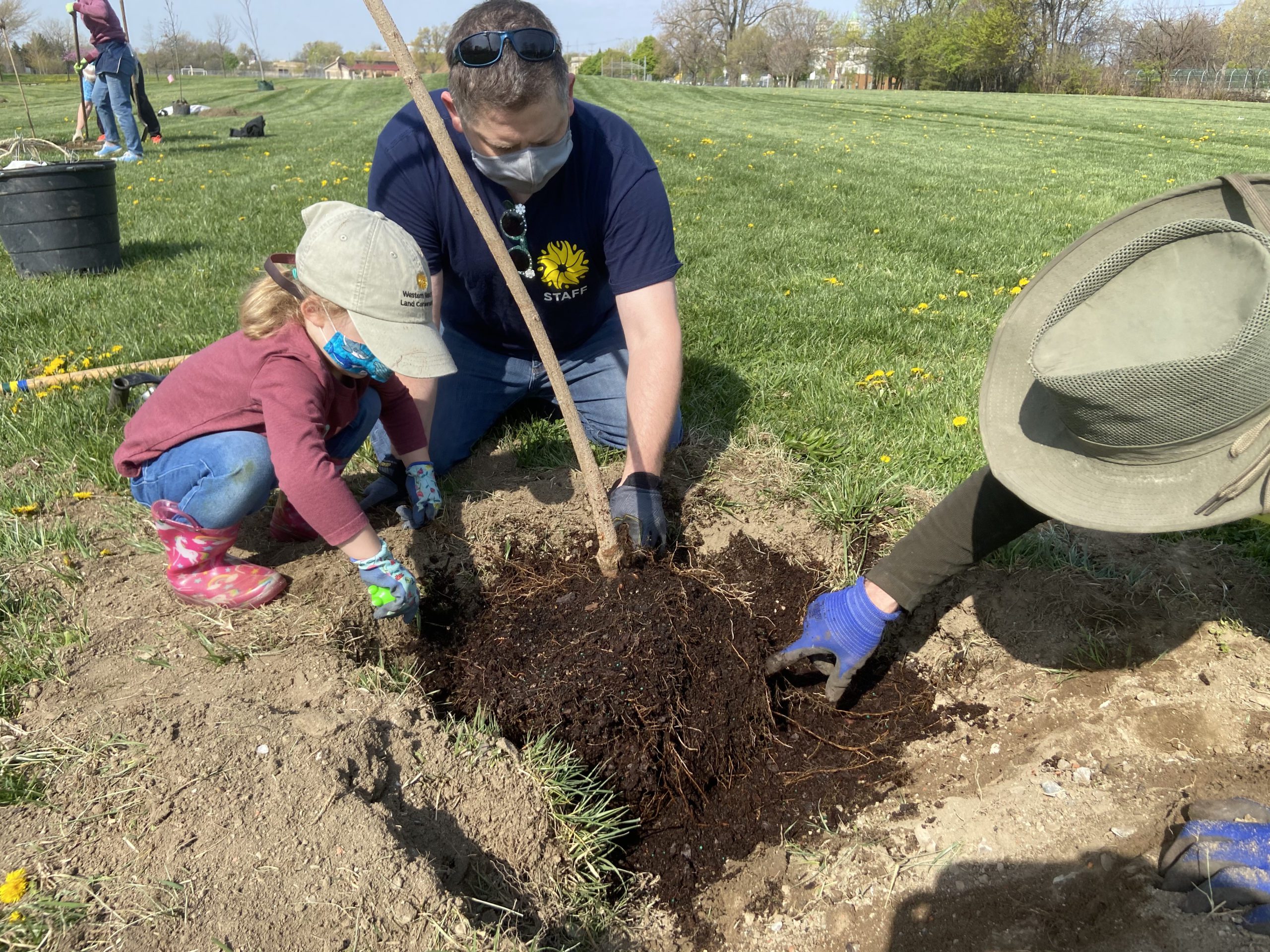
Cleveland Mayor Justin M. Bibb and Western Reserve Land Conservancy Celebrate Arbor Day at Tree Giveaway
To celebrate the 50th anniversary of Arbor Day, Cleveland Mayor Justin M. Bibb joins Western Reserve Land Conservancy in the Kinsman neighborhood to distribute 160 trees to Cleveland residents. Nearly 70 percent of the trees will be given to residents living in Cleveland’s east side neighborhoods with the lowest tree canopy coverage in an effort to reforest the Forest City.
Today Mayor Bibb will arrive at the Rid-All Green Partnership located at 2921 E. 82nd St. at 9 a.m. to distribute trees to Cleveland residents who have pre-registered to receive them. Mayor Bibb will welcome attendees around 9:15 a.m.
Other residents will have their trees delivered and planted at their private residential properties by volunteer teams led by Land Conservancy staff.
“Increasing the city’s tree canopy coverage is so important for the health and wellness of our community,” said Mayor Bibb. “I am excited to participate in the tree distribution as a small step toward a more equitable allocation of green space for the residents of Cleveland.”
Western Reserve Land Conservancy’s Reforest Our City (ROC) program began in 2015 shortly after the City of Cleveland released the Cleveland Tree Plan, which noted a significant drop in Cleveland’s urban tree canopy and the urgent need to plant more trees and replenish its urban forest.
“We value the City’s support of our Reforest Our City program and steps we are taking to increase our depleted urban tree canopy. Trees improve our lives by cleaning air and water, making us healthier, increasing property values, and reducing energy use,” said Lizzie Sords, the Land Conservancy’s manager of urban forestry. “Together with the City of Cleveland and our partners in the Cleveland Tree Coalition, we can reforest the Forest City for generations to come.”
Increasing the city’s tree canopy coverage is so important for the health and wellness of our community. I am excited to participate in the tree distribution as a small step toward a more equitable allocation of green space for the residents of Cleveland. – Cleveland Mayor Justin M. Bibb
On Wednesday, the Land Conservancy joined American Forests and Ohio Senator Sherrod Brown on a press call announcing Brown’s introduction of the Neighborhood Trees Act of 2022 this week. The legislation would create the Neighborhood Trees Act Fund, allocating $100 million for fiscal year 2023, $200 million for fiscal year 2024, $400 million for fiscal year 2025, $600 million for fiscal year 2026 and $700 million for fiscal year 2027.
“We know trees are vital to our communities, but neighborhoods with more residents of color have a third less tree canopy than other majority-white neighborhoods. That’s why Western Reserve Land Conservancy’s efforts to help restore the city’s tree canopy are so important,” said Ohio Sen. Sherrod Brown. “I’ve also introduced new legislation to plant more trees in urban areas – particularly underserved neighborhoods that haven’t had this needed investment for so long. Having trees in your community – and the cleaner air and lower utility bills that come with them – shouldn’t be an asset just for the wealthy and the privileged.”
The Secretary of Agriculture would be able to award this funding to plant trees, giving priority for the funds to those who prioritize tree planting in low-income communities or communities with lower tree canopy; have a higher maximum daytime summer temperature compared to surrounding communities; or are historically redlined neighborhoods.
The legislation has been endorsed by American Forests, the National Wildlife Federation, the Davey Tree Expert Company, Western Reserve Land Conservancy, the Cleveland Tree Coalition, the Trust for Public Land, Groundworks USA and the Sierra Club.
A healthy urban tree canopy coverage – the layer of tree leaves, branches, and stems that provide tree coverage of the ground when viewed from above – should be at 30 percent. Cleveland’s tree canopy coverage is at 18 percent and falling; cities like Cincinnati, Pittsburgh and Washington, D.C. all boast tree canopy coverage above 30 percent. According to a 2020 progress report from the Cleveland Tree Coalition, meeting the canopy cover goal of 30% by 2040 will require the planting and successful establishment of 28,400 trees per year.
